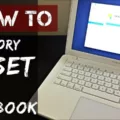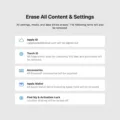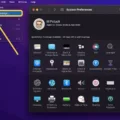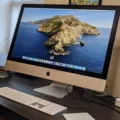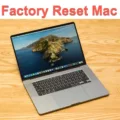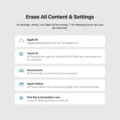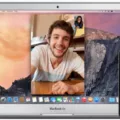Are you looking to factory reset your old MacBook? If so, you’re in the right place. We’ll take you through the basics of how to do a factory reset on your old MacBook, and what it does.
Factory resets are an important part of keeping your Mac secure and running optimally. They help to make sure that all of the settings and data stored on your machine are cleared out, giving you a fresh start. It also helps to ensure that your machine is free from any malicious software or viruses that might have been installed without your knowledge.
The process of doing a factory reset on an old MacBook is fairly simple and straightforward. To begin, shut down your Mac completely and then press the power button to turn it back on. Once it begins to boot up, press and hold Command-R until you see the Apple logo appear. This will put your Mac into Recovery Mode.
Once in Recovery Mode, open up Disk Utility from the utility menu in the top bar of your screen. Find the drive that contains your Mac’s operating system (usually called “Macintosh HD”) and select “Erase” from the dropdown menu at the top of the window. Choose “Mac OS Extended (Journaled)” as the format for erasing, then click Erase to begin wiping all data from your hard drive.
Finally, once Disk Utility has finished erasing all data from your hard drive, you can close out of Disk Utility and choose Reinstall macOS from the utility menu in Recovery Mode. This will reinstall a clean copy of macOS onto your machine, completing the factory reset process.
So there you have it – now you know how to do a factory reset on an old MacBook! Just remember that this process will erase everything stored on your computer (including any files or documents), so make sure to back up anything important beforehand!
Factory Resetting an Old Mac
To factory reset your old Mac, begin by opening the Apple menu. in the corner of your screen and select System Preferences. Once in System Preferences, select General in the sidebar. From there, click Transfer or Reset on the right side and then select Erase All Content and Settings. This will delete all of your data from your Mac and restore it to its original factory settings. Be sure to backup any important data before erasing your computer.
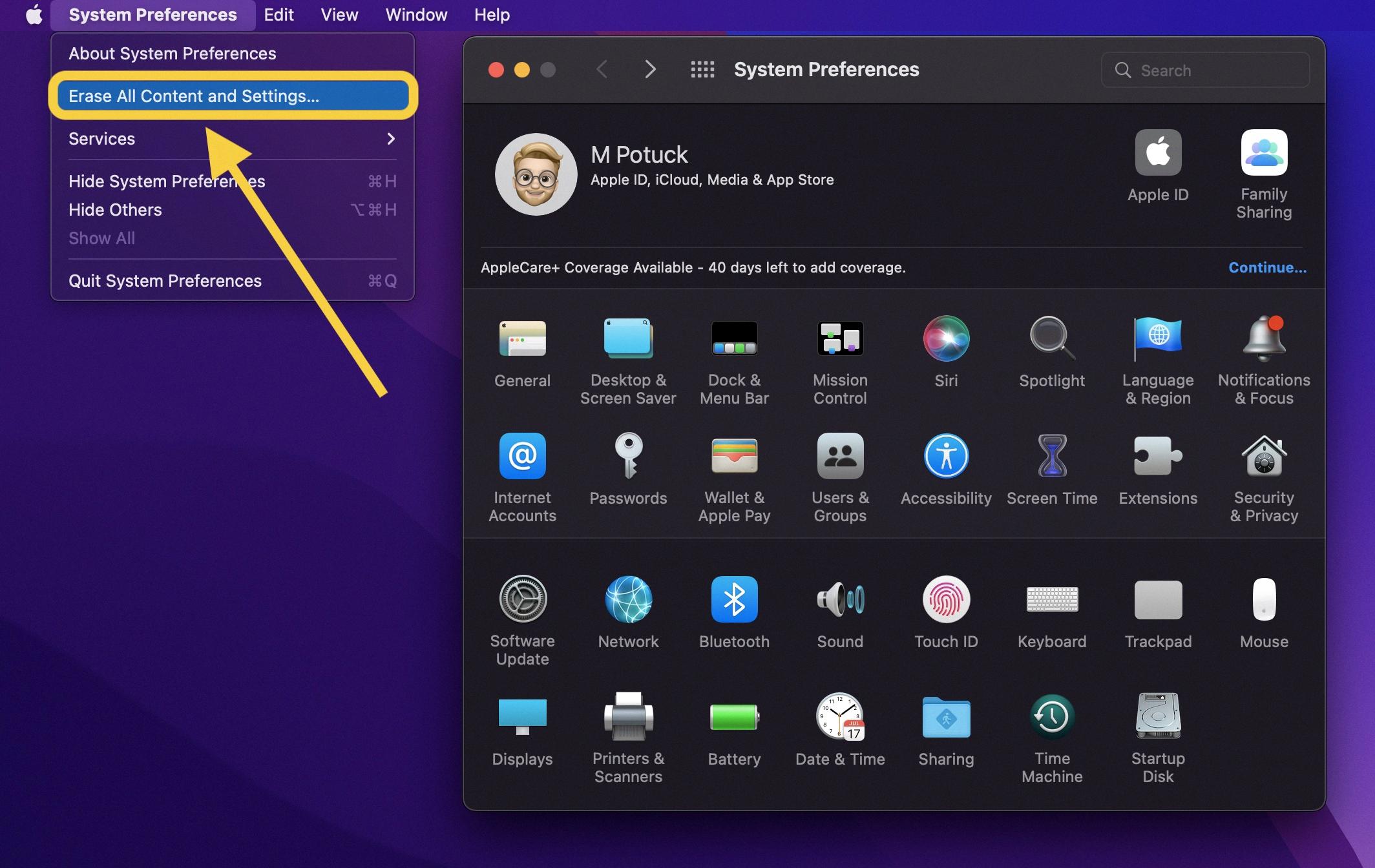
Source: 9to5mac.com
Wiping a 2008 MacBook
Putting your 2008 MacBook into Recovery Mode is the first step to wiping it. To enter Recovery Mode on an old Intel-based Mac, restart it and immediately press and hold Command-R. You can release the keys once you see the Apple logo. Once you’ve entered Recovery Mode, you can use the Disk Utility to erase your hard drive. Select your Macintosh HD from the list of drives and click Erase. Choose a format type and click Erase to begin wiping your MacBook’s hard drive. Once it’s done, you can proceed with reinstalling MacOS if needed.
Resetting an Old MacBook Pro
To hard reset an old MacBook Pro, you’ll need to power it on and immediately press and hold the Option, Command, P, and R keys together. Hold them for about 20 seconds before releasing them, as this will clear any user settings from memory and restore certain security features that may have been altered. You may then be prompted to restart your MacBook Pro after the reset is complete.
Factory Resetting a 2010 MacBook
To factory reset your 2010 MacBook, you first need to start up your computer while holding down the Command and R keys. This will bring up the OS X Utilities menu. Select Disk Utility, then select “Mac OS Extended” on the left side of the window. Now click “Erase” at the top of the window. Choose a name for your disk and make sure that “Mac OS Extended (Journaled)” is selected from the Format drop-down menu. Once you have filled out all of these fields click “Erase” once more to confirm. This will erase all data on your hard drive and reset it back to factory settings. Finally, click “Done” and restart your computer for the changes to take effect.
Wiping a 2009 MacBook Pro
To wipe your 2009 MacBook Pro, you’ll need to boot it into the Disk Utility. To do this, power on your MacBook Pro and press and hold the C key until you see the language selection screen. Select your language of choice and then choose Disk Utility from the Menu bar at the top of the screen.
Once in Disk Utility, select your hard drive from the left side panel and then click Erase. This will erase all data from your hard drive, allowing you to start fresh with a clean slate. Once that is complete, quit Disk Utility and you’re ready to begin setting up your MacBook Pro.
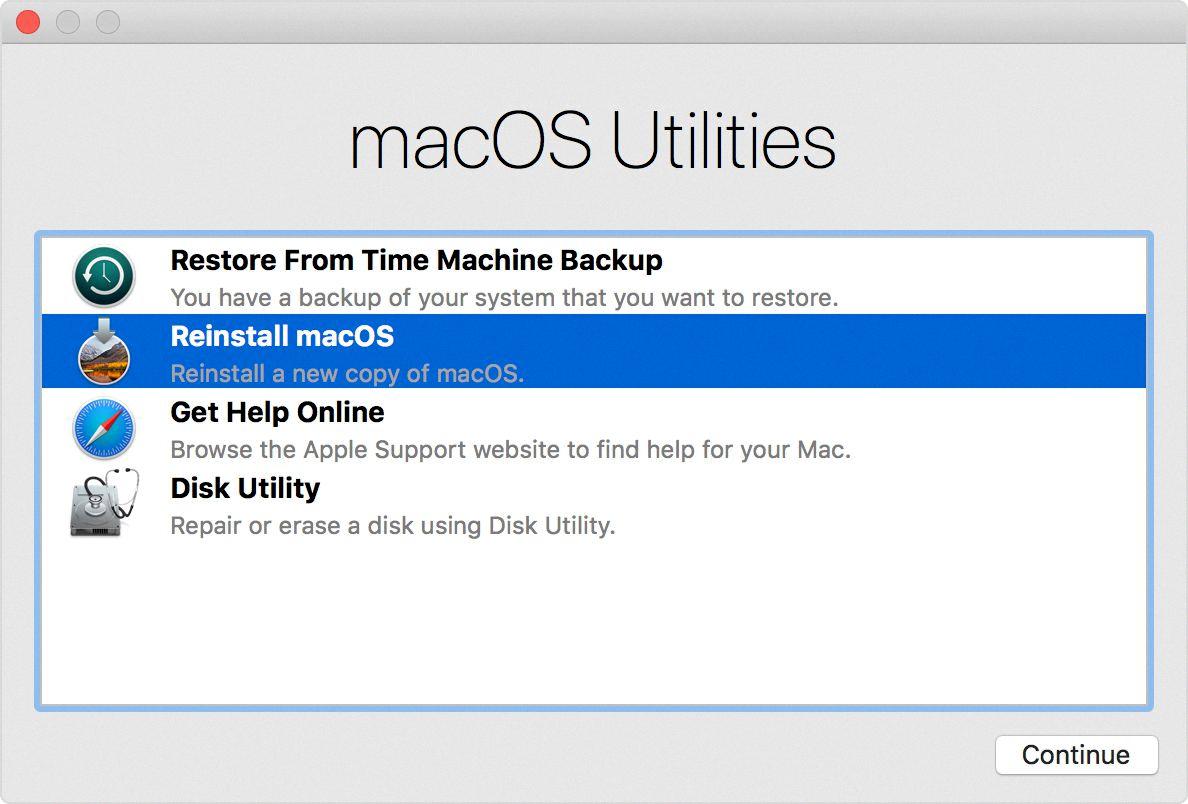
Source: lifewire.com
Factory Resetting a 2009 MacBook Pro Without a Disk
If you have a 2009 MacBook Pro and would like to reset it to its factory settings without using a disk, you’ll need to do the following:
1. Make sure you have backed up any important files or data that you would like to keep.
2. Turn off your computer, then press and hold down the Command, Option, and R keys while turning it back on.
3. Your computer will boot into the macOS utility window – select Disk Utility from the list of options.
4. In the sidebar of Disk Utility, select your Macintosh HD drive (or whatever your main hard drive is called).
5. Click on Erase in the top right corner of Disk Utility to begin erasing your hard drive – once it is finished erasing, quit Disk Utility by clicking on Disk Utility in the top left corner of the screen and selecting Quit Disk Utility from the drop-down menu that appears.
6. Select Reinstall macOS from the list of options in the macOS Utilities window and follow the instructions given by your computer’s setup assistant to reinstall OS X on your hard drive.
The Effects of a Hard Reset on a Mac
Yes, a hard reset on Mac will erase everything. This means that any personal files, applications, and settings you have saved on your computer will be wiped out and replaced with the factory default settings. Additionally, any software or hardware updates you have installed since purchasing the Mac will also be removed. Therefore, it is important to create a backup of your data before performing a hard reset.
Resetting an Old Mac Without a Password
In order to reset your old Mac without a password, you need to start by entering Recovery Mode. To do this, restart your Mac and press and hold the Command+R keys as soon as you hear the startup chime. Keep holding the keys until the Apple logo appears. Once in Recovery Mode, select Disk Utility from the utility menu at the top of the screen. Once in Disk Utility, select the Macintosh HD from the list of volumes on the left-hand side and then click on Erase from the main menu at the top of the window. Select Mac OS Extended (Journaled) for your format and then click Erase. When this is complete, quit Disk Utility and select Reinstall macOS from the utility menu at the top of your screen. Follow any instructions that appear onscreen to complete resetting your Mac.
Resetting a Mac to Factory Settings When Unable to Log In
If you are unable to log into your Mac, you can reset it to its factory settings using macOS Recovery. To start up from macOS Recovery, turn off your Mac. Then press and hold the Command (?) and R keys on the keyboard until you see an Apple logo or spinning globe.
When the macOS Utilities window appears, select “Reinstall macOS” from the utility menu. Follow the onscreen instructions to begin reinstalling macOS.
Once you have reinstalled macOS, the setup assistant will prompt you to create a new user account. Select “Erase Mac” from the Recovery Assistant menu in the menu bar and click “Erase Mac” and then “Erase Mac” again to confirm. This will erase all of your data and reset your Mac to its original factory settings.

